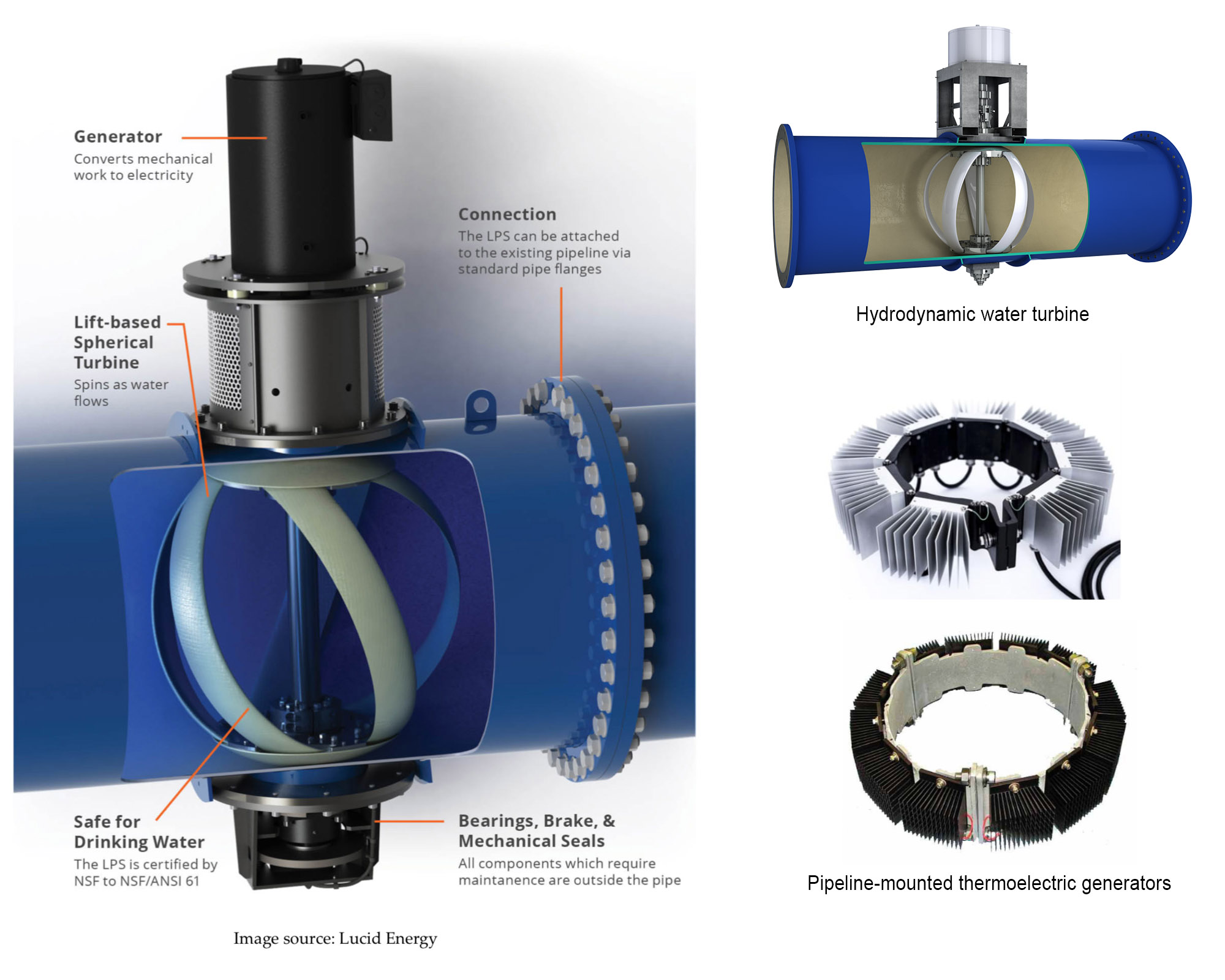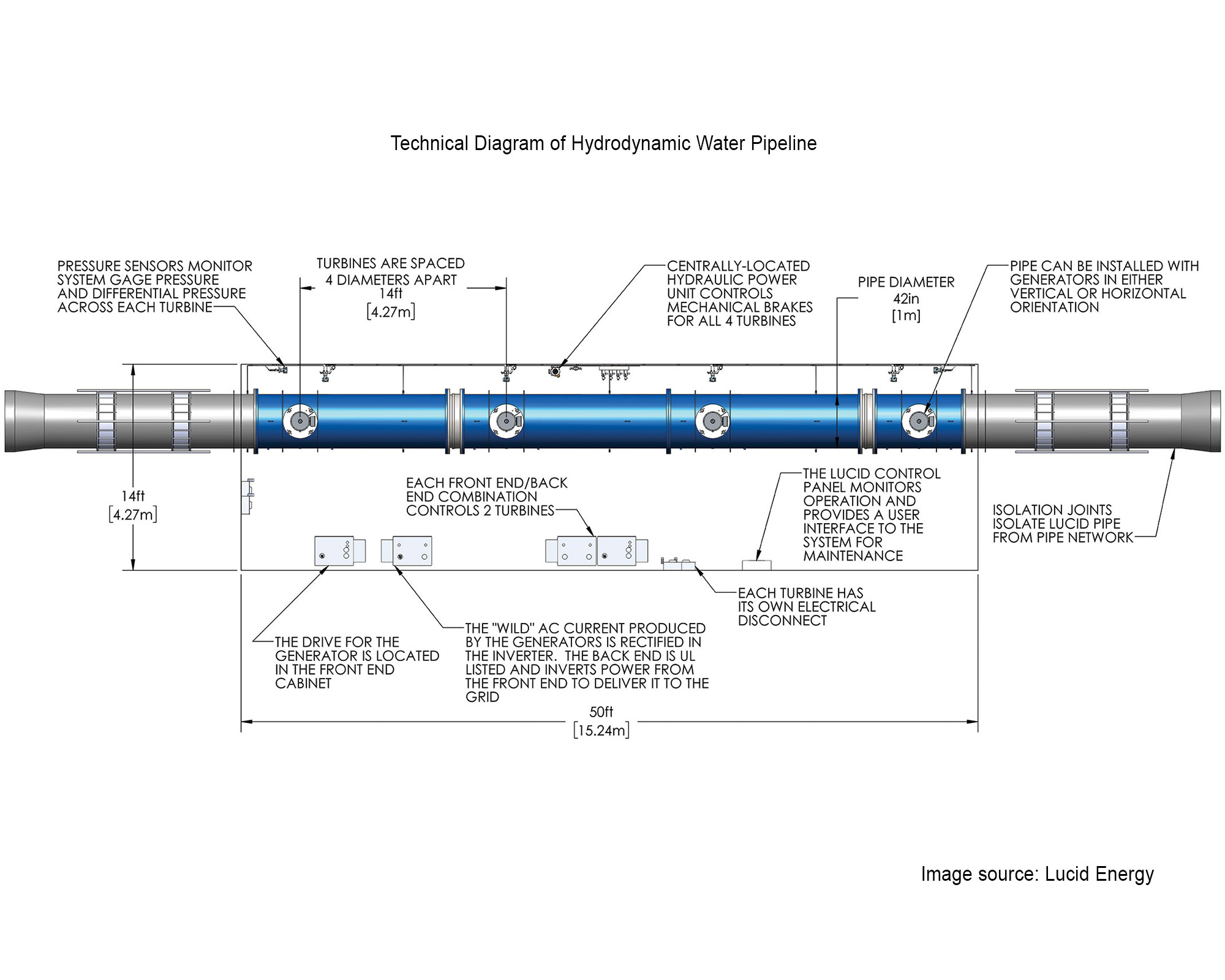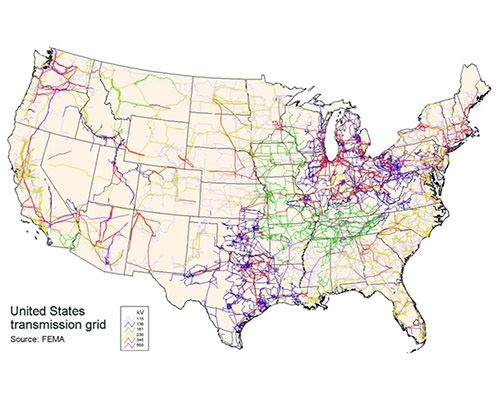The National Aqueduct is the cornerstone of
Scarcity Zero's ability to solve resource scarcity and store energy generated by renewable power on a nationwide scale. In concept, it’s a nationwide array of modular, above-ground pipelines and storage facilities designed to transport billions of gallons of desalinated seawater to any location in the country. Intended to be built alongside our interstate highway and high-tension power line networks, it serves four vital roles:
- Solve drought and water scarcity anywhere in the nation.
- Operate as a fourth energy source alongside renewable cities, Small Modular Reactorsand Cogeneration Facilities.
- Serve as a nationwide storage medium for renewable energy.
- Provide endless, sustainable volumes of water.
As an integral part of the framework that ties every other technology behind
Scarcity Zero together, the National Aqueduct leverages three methods to generate electricity as a dynamic, decentralized power plant on a massive scale. They include solar panels on top of pipelines, hydroelectric turbines within pipelines themselves, and thermoelectric generators by virtue of water being stored throughout the National Aqueduct at a comparatively high temperature (190°F / 88°C).
The nature of this deployment enables the National Aqueduct to deliver fresh water to any corner of our nation on demand and generate electricity every single step of the way - regardless of climate or season. Further, because the National Aqueduct would store a large volume of water, the high specific heat of water
[1] enables this system to function as a gigantic nationwide battery - the world's largest by far.
[2] The key to making this approach possible is the pre-cleared and publicly owned land of our interstate highway networks and high tension power lines. The three images below respectively show maps of our interstate highway system, high-tension power line networks, and, for comparison, oil pipelines nationwide.
From these maps, we see that not only do we already have the open space to build a system on the scale of the National Aqueduct at no additional land cost, we see further that we've already built similar systems - at higher costs and difficulties than we would face with fresh water. If we can build tens of thousands of miles of pipelines for oil that nearly always come with expensive land purchases and daunting environmental considerations, leveraging pre-cleared public land to run prefabricated water pipelines is a significantly easier task.
Because of its decentralized nature as both a resource-delivering and power-generating system, the National Aqueduct can serve as a resilient secondary electric grid, providing yet another potent source of power while also solving drought, water scarcity and renewable energy storage needs. It's a one-two-three-four punch that can be leveraged further to grow food indoors within vertical urban farms, as well as enable the agriculture of specialized organisms that can make the base chemicals to manufacture next-generation materials.









